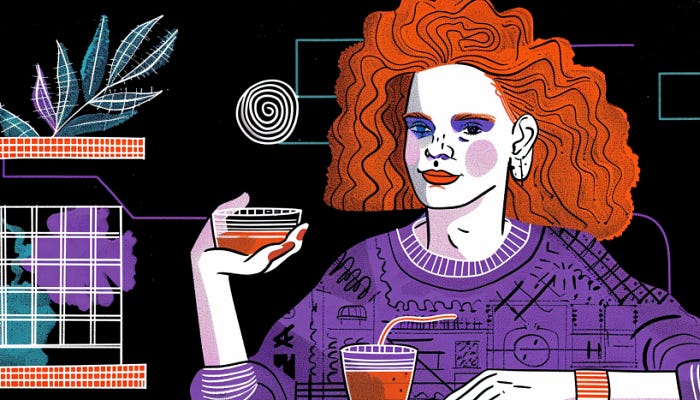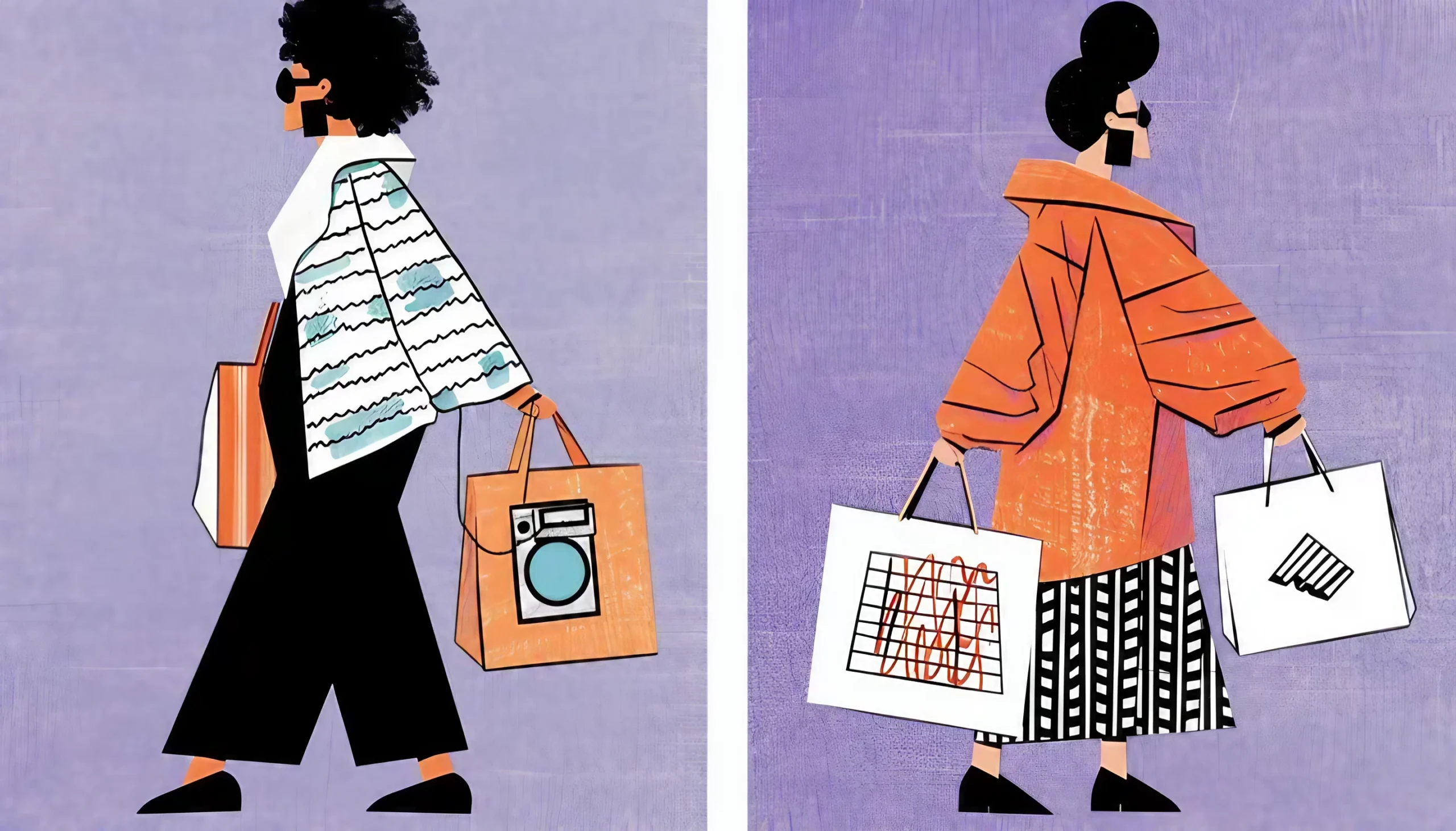Today’s world puts us all just a few clicks away from discovering a competitor’s product or service. Think about the last time you downloaded an app or signed up for a service. Did it deliver what it promised? Or did you feel frustrated and disappointed? Whether it was smooth and delightful or a bit of a headache, that experience likely influenced whether you stuck around. That’s what user experience (UX) is all about—it’s the sum of all interactions users have with a brand, and it plays a crucial role in whether they stay loyal or jump ship.
So, why is UX such a big deal for customer retention? When a product feels like it was crafted with the user’s needs and frustrations in mind, it creates a bond. On the flip side, a bad experience—even a small one—can push users away. And with so many options out there, businesses can’t afford to overlook this.
Let’s dive into how and why UX matters for customer retention and explore what businesses can do to keep customers coming back for more.
Understanding UX and Customer Retention: The Dynamic Duo
We’ve all heard the phrase “customer is king,” but in the digital age, “user experience is king” might be more accurate. UX focuses on crafting a customer journey that is intuitive, enjoyable, and valuable from beginning to end. It’s not just about having a sleek design or a fast-loading website; it’s about ensuring that every single interaction—no matter how small—contributes positively to the customer’s journey.
Customer retention, on the other hand, refers to the ability to keep customers coming back for more. High retention rates mean that a business isn’t just good at attracting new customers but is also effective at keeping the ones it has. So how are UX and retention connected? Quite simply, good UX keeps customers happy, engaged, and loyal. Poor UX? It sends them running to your competitors.
Think of UX and customer retention as dance partners; when they move well together, they create a flow that’s almost magical. But if they stumble, well, the audience (in this case, the customer) might just look away.
Creating Positive Emotional Connections
Ever notice how some apps or websites just feel… right? When you use them, you don’t feel frustrated or lost; instead, it’s like they anticipate your needs. That’s no accident. Good UX is all about understanding the customer on a deep level and designing around their needs and expectations. When a product feels like it “gets” you, it’s only natural to want to keep coming back to it.
This emotional connection is powerful. Just like a friend who’s always there for you, a product that consistently provides a seamless experience becomes something you trust. And trust is the foundation of loyalty. A positive user experience can make customers feel valued and understood, encouraging them to remain loyal to the brand.
Take Apple, for example. Their products are designed to be intuitive and easy to use, making users feel smart and capable. People don’t just buy Apple products for functionality; they buy them for the experience. And that’s the kind of loyalty every business should aim for.

Identifying Friction Points: Small Annoyances, Big Impact
Imagine you’re scrolling through an online store, finally spotting the perfect item after browsing for what feels like forever. You add it to your cart, feeling the thrill of an impending purchase. But then… you hit a wall. The checkout process is confusing, with too many steps, endless fields, and unexpected shipping fees. What started as a smooth experience quickly turns sour. You abandon your cart, frustrated and disappointed, and chances are, you won’t be back.
These interruptions are known as friction points. They’re the unexpected bumps that disrupt the user journey, making a previously enjoyable experience feel like a chore. Friction points don’t just affect a single transaction; they leave a negative impression that lingers, causing users to reconsider future interactions with the brand.
Common Friction Points and How to Eliminate Them
- Long Load Times: In today’s fast-paced world, users expect speed. According to studies, 40% of users will abandon a site if it takes more than three seconds to load. Even a slight delay can feel like an eternity when users are ready to act. A slow site doesn’t just frustrate users; it sends a subtle message that their time isn’t valuable. Optimizing images, reducing heavy scripts, and using faster hosting are just a few ways businesses can shave seconds off load times and keep users engaged.
- Complicated Navigation: If users can’t find what they’re looking for, they’re going to leave. Think about a department store with aisles that make no sense—customers would likely give up and walk out. Online, this is even more pronounced. Clear menus, intuitive icons, and a well-organized layout make the difference between a pleasant experience and a frustrating one. Amazon’s website, for instance, is designed with user behavior in mind. The navigation is clear and predictable, allowing users to find everything from electronics to groceries with minimal effort.
- Intrusive Pop-Ups and Ads: Picture this: you’re trying to read an article, but pop-ups keep interrupting every few seconds, blocking your view. This annoyance is akin to a salesperson following you around a store, repeatedly asking if you need help when all you want is space to browse. Pop-ups are often necessary, but they should be used sparingly and strategically. Only the most essential information should pop up, and ideally, only once during a session.
- Confusing Checkout Processes: A confusing checkout process is a common friction point in e-commerce. Think about the last time you tried to check out and were asked to fill out countless fields, create an account, or re-enter information multiple times. Each unnecessary step increases the chances of cart abandonment. Simplifying checkout to a few essential fields, offering a guest checkout option, and allowing users to save their information for future purchases can significantly reduce friction.
- Surprise Costs: Transparency matters. A user who sees a price listed on a product page expects to pay that price (plus tax) at checkout. Adding shipping fees or unexpected surcharges at the last moment can create a sense of deception, potentially leading users to abandon their purchase. Displaying estimated costs early in the shopping experience or offering free shipping options over a certain amount can prevent this issue.
Addressing Friction Points to Build Loyalty
Identifying and eliminating friction points isn’t just about making a single transaction easier; it’s about building a relationship based on respect and understanding. Every extra second a user waits, every confusing page they encounter, every pop-up that interrupts them—it’s all like a pothole on their journey with your brand. Individually, they might seem small, but collectively, they create a bumpy experience that wears down users’ patience and trust.
Consider the ride-sharing app Uber. Their one-click ride request and transparent cost estimates have transformed the transportation experience by removing traditional friction points like hailing a cab or dealing with cash payments. This ease of use has kept customers coming back because they know they’re in control and their time is respected.
When businesses proactively smooth out these friction points, they’re not just improving user experience; they’re signaling to customers, “We care about your time and experience.” By investing in removing these small annoyances, companies can keep customers on a smoother, more enjoyable path that leads them back, time and time again.

The Impact of Personalization on User Experience
In an age where one-size-fits-all no longer cuts it, personalization has emerged as a crucial element in user experience. Today’s customers expect brands to know them—their preferences, habits, and even the little details they might not consciously notice. When businesses can anticipate what users want or need, it transforms the experience from merely transactional to genuinely engaging.
Why Personalization Matters More Than Ever
Imagine stepping into a boutique where the salesperson remembers your name, knows your style, and even recalls items you browsed on your last visit. You feel valued, special, and—let’s be honest—a bit like a VIP. Online, users crave the same attention to detail. Personalization turns what could be an ordinary interaction into something memorable and valuable, and it builds loyalty by making users feel like they belong.
For example, Netflix doesn’t just show the same catalog to every user. Its recommendation engine suggests shows and movies tailored to each viewer’s tastes based on previous choices. These personalized suggestions save users time, introduce them to new content they’re likely to enjoy, and create a more intimate experience with the brand. As a result, users find value in returning because it feels as if Netflix understands them on a personal level.
Levels of Personalization: From Simple to Sophisticated
Personalization can vary widely in complexity.
- Basic Personalization—Names and Preferences: At a basic level, personalization might mean greeting users by name or remembering their language preference. Even these small touches show users that their unique identity is acknowledged. Think of how Starbucks includes names on orders in-store or via the app. It’s simple, but it builds a sense of personal connection.
- Behavior-Based Suggestions—Tailored Recommendations: Another layer of personalization includes making recommendations based on browsing or purchase history. Online stores like Amazon use this effectively, suggesting items based on recent views or purchases. A user who browsed hiking gear, for example, might see recommended products related to camping, travel accessories, or outdoor apparel. These tailored suggestions meet users’ needs even before they’ve realized them, making the experience efficient and enjoyable.
- Predictive Personalization—Anticipating Needs: At the highest level, personalization involves predictive elements, where brands anticipate what users might need next based on behavior patterns. For instance, fitness apps like MyFitnessPal can predict when a user is likely to log a meal or suggest workout plans based on previous habits. By “predicting” what users want, these apps feel intuitive, like a helpful assistant rather than just a tool.
Creating Loyalty Through Personalized Experiences
When businesses implement personalized elements thoughtfully, they tap into the human need for recognition and connection. Personalized UX communicates to users that they’re not just another visitor or customer but someone the brand truly values. This kind of individual attention can be a powerful differentiator, encouraging customers to stay loyal because they feel uniquely understood.
Consider Spotify’s “Discover Weekly” playlist as a prime example. By curating a personalized playlist each week based on a user’s listening history, Spotify adds a delightful surprise to its user experience. Users look forward to Monday’s release of a new playlist tailored just for them, turning what could be a mundane interaction into a weekly ritual. This level of personalization doesn’t just keep users engaged; it keeps them invested in the experience.
Ultimately, personalization in UX is about creating an environment where users feel seen, understood, and valued. And when customers feel that a brand “gets” them, they’re far more likely to return. Whether it’s a simple greeting or a complex recommendation algorithm, personalization is a powerful tool that can transform UX from merely functional to truly engaging, building relationships that stand the test of time.
Consistency Across Platforms
Consistency isn’t flashy, but it’s powerful. Think of it like visiting your favorite restaurant—you know the menu, the atmosphere, even the seating arrangement. You feel comfortable because you know what to expect. In the digital world, customers expect the same level of consistency.
For instance, let’s say a customer starts shopping on a retail website, then continues on their mobile app. If the design, navigation, and even color scheme are vastly different, the experience becomes disjointed and confusing. A seamless transition between platforms—whether it’s desktop, mobile, or app—strengthens trust. If users know what to expect each time, they’re more likely to continue using the product across multiple channels.
Look at brands like Starbucks, which provides a consistent experience through its app, website, and physical locations. From ordering coffee to tracking rewards, the process feels familiar across every touchpoint. This level of consistency builds trust, making customers feel comfortable and encouraging them to keep coming back.
Good UX doesn’t just make users happy; it makes them loyal. And in a world full of options, loyalty is everything. So, as you think about building your product, remember: investing in UX isn’t just an option—it’s a necessity for success.








